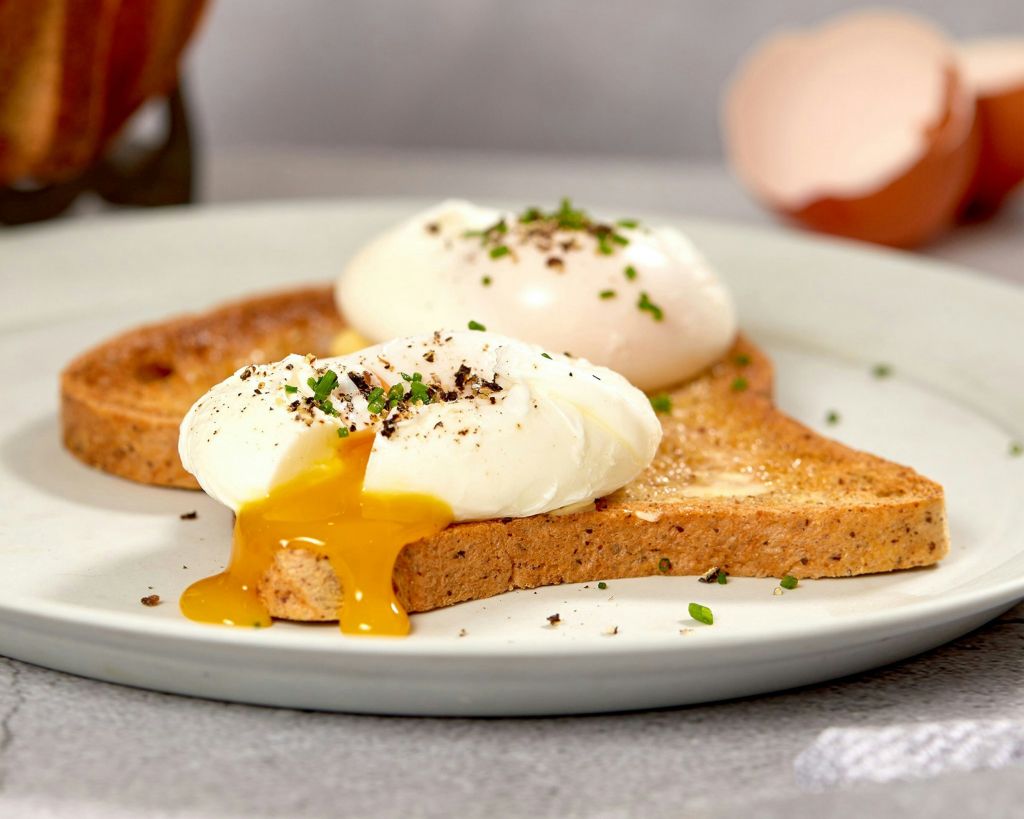 Poached eggs oozing a runny yolk on toast
Poached eggs oozing a runny yolk on toastUsually, Anthony Bourdain’s heart-cloggingly accurate insight rings true ― if you want to make your homemade dinner taste like a meal out, the answer usually lies in an unholy amount of butter.
Indeed, that’ll make something like a hollandaise sauce sing ― but it’s not the case with poached eggs, whose pebble-round shape and perfectly gooey yolks can be perfected with just water and skill.
Every time I try to get chef-level results at home, I fail; the yolk stays solid, those annoying wisps cling to the egg, and my vortex and vinegar method doesn’t stop the meal from taking a less-than-presentable shape.
So it’s a good thing pros, including experts from Cooks Illustrated and chefs like Thomas Keller, have spilled their industry secrets.
How can I get a perfect poached egg?
We’ve written before at HuffPost UK about why straining eggs in a fine-mesh sieve before poaching them can eliminate those annoying wisps.
Cooks Illustrated seems to agree with this advice, stating: “We generally think of eggs as having two parts; the yolk and the white. But it actually has three parts. It has a yolk, then a thicker white ’round the yolk, and a loose white on the edges.”
Straining the eggs for roughly 30 seconds gets rid of that last layer.
Thomas Keller, who wrote his advice for Masterclass, says that stirring boiling water into a vortex before gently placing the egg in its swirling centre is key.
“The swirling water will help the egg white envelop the yolk evenly as the egg white proteins set, creating a nice natural shape,” he stated.
The chef also thinks water temperature really matters ― a lava-like boil cooks the eggs too quickly. We should aim for water that has small bubbles on its surface, he says, otherwise known as a “rolling simmer.”
Both Keller and Cook’s Illustrated agree that you should add a bit of vinegar to the water too, as this sets the whites faster.
The sooner the egg firms up, the less time it has to lose its shape in the pan.
How long should I cook a poached egg for?
Once you’ve followed those instructions, you might be wondering how long to leave the egg in the water to avoid either a sticky egg white or a chalky yolk.
Per BBC Good Food, the “Goldilocks zone” lies at about three to four minutes ― as soon as there’s no translucent white left, they say, you’re good to go.
Lastly, though some recommend lifting the egg out of water with a slotted spoon to avoid the dreaded drip, some Redditors found that a potato masher did a better job.
And if that’s too high-risk a strategy for your precious poached eggs, fishing them out with a spoon and letting them rest on some kitchen roll for a few seconds can do the trick, too.


